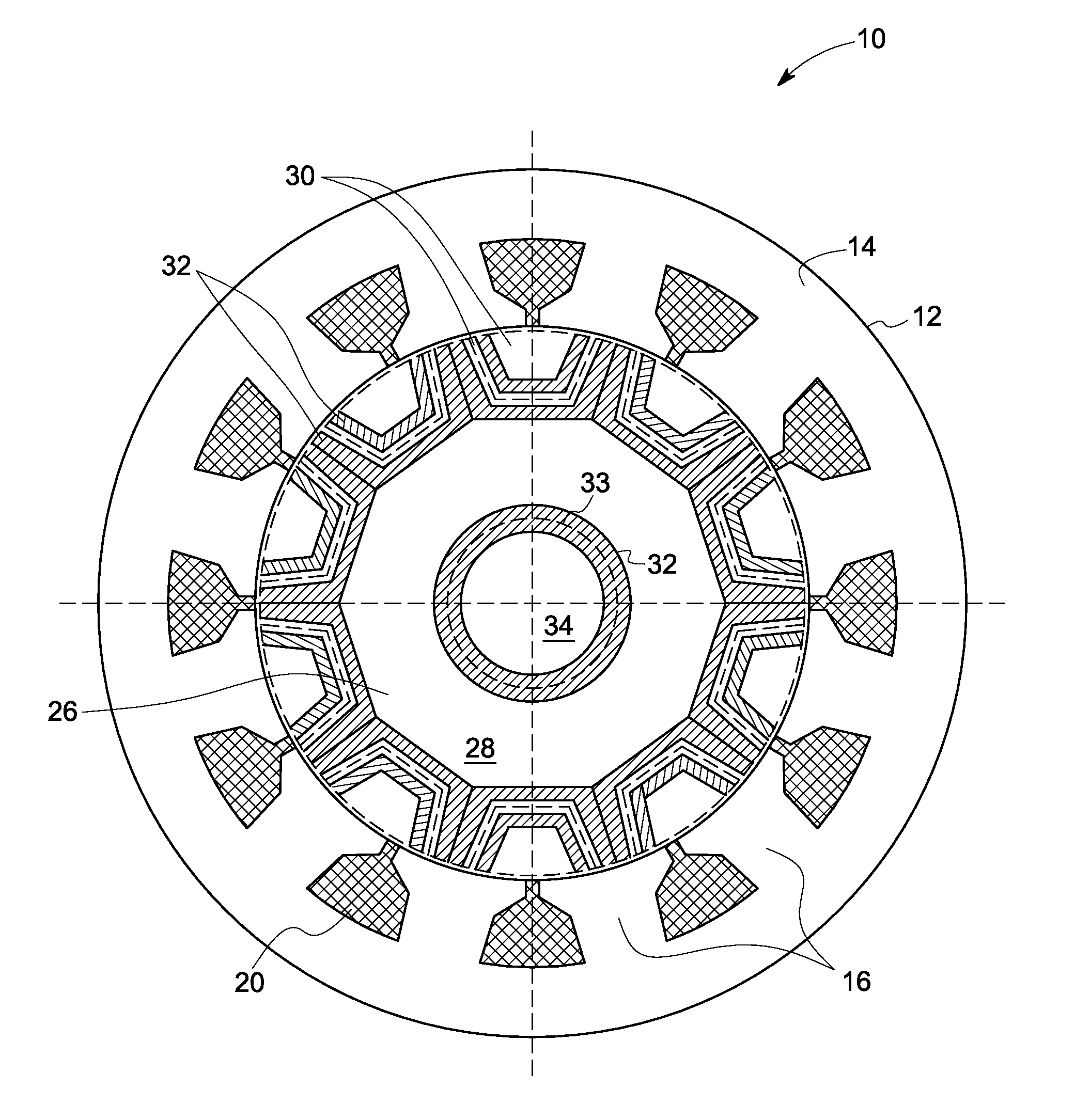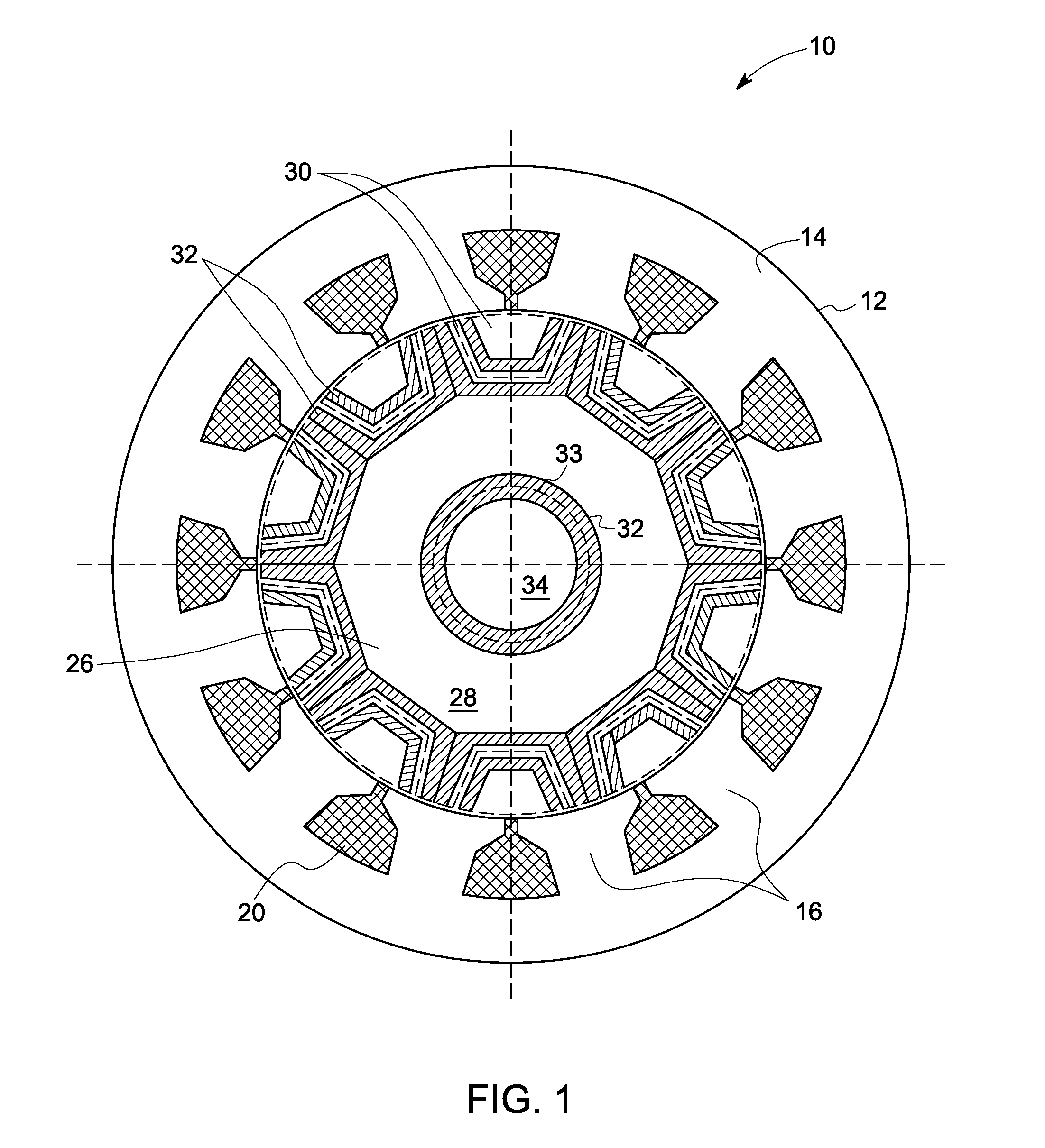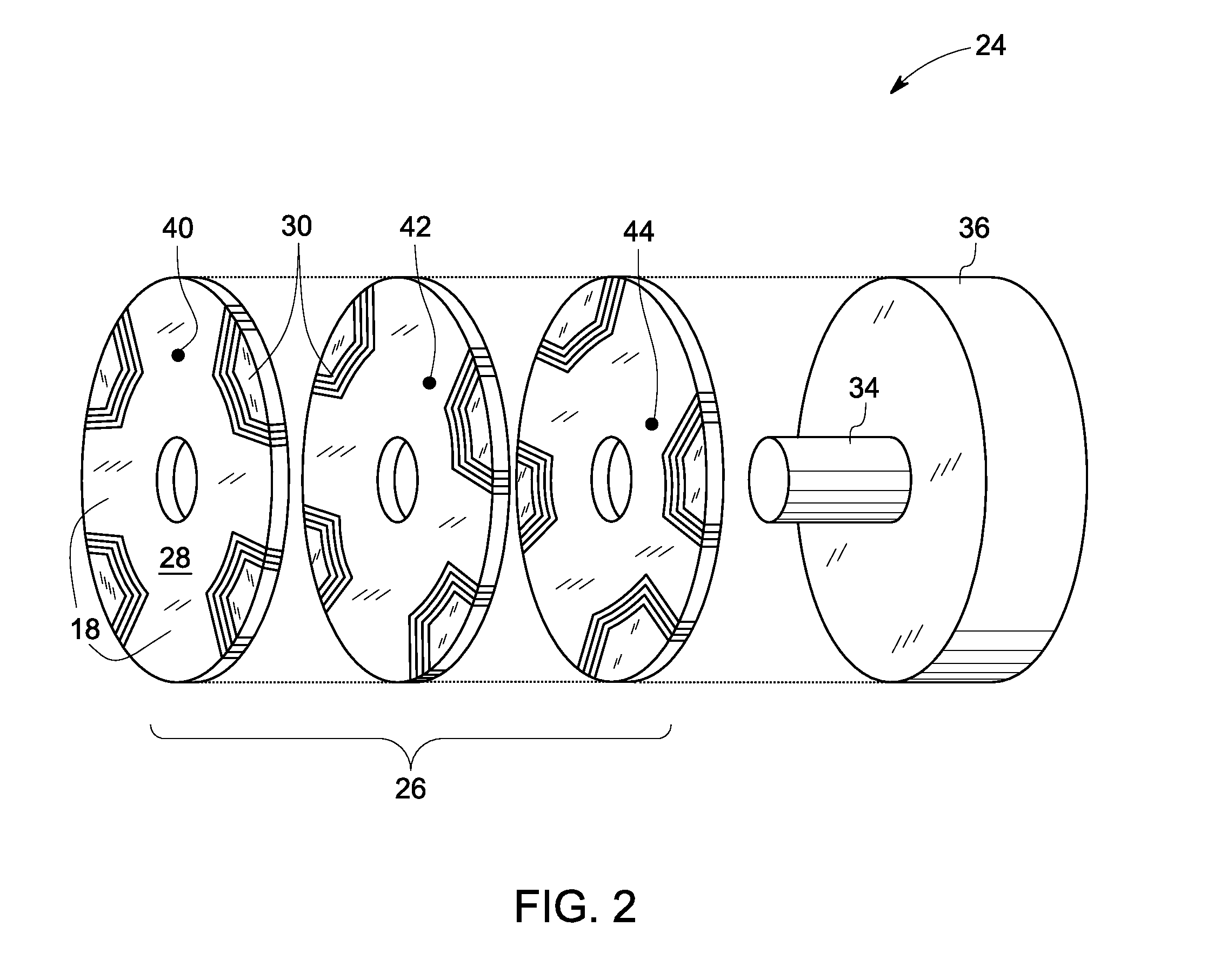Synchronous reluctance machine
a synchronous reluctance machine and synchronous technology, applied in the direction of dynamo-electric machines, magnetic circuit rotating parts, magnetic circuit shapes/forms/construction, etc., can solve the problems of generating adjacent phases may be seriously affected, and rotating magnets generate potentially dangerous high currents in short circuit paths
- Summary
- Abstract
- Description
- Claims
- Application Information
AI Technical Summary
Benefits of technology
Problems solved by technology
Method used
Image
Examples
Embodiment Construction
[0020]As discussed in detail below, embodiments of the invention are directed to fault tolerant synchronous reluctance machines. As used herein, the term ‘fault tolerant’ refers to magnetic decoupling between phases while reducing noise, torque ripple, and harmonic flux components.
[0021]FIG. 1 is a diagrammatic illustration of a synchronous reluctance machine 10. The synchronous reluctance machine 10 comprises a stator 12 including a stator core 14. The stator core 14 includes multiple stator teeth 16. Windings 20 are wrapped around the stator teeth 16. In a presently contemplated embodiment, the windings 20 are fractional slot concentrated windings. Each pair of diametrically opposite stator teeth 16 is connected in series or parallel to form an independent phase winding of the synchronous reluctance machine 10. In an exemplary embodiment, the synchronous reluctance machine has a three phase winding.
[0022]The synchronous reluctance machine 10 also includes a rotor 24 (shown in FIG....
PUM
 Login to View More
Login to View More Abstract
Description
Claims
Application Information
 Login to View More
Login to View More - R&D
- Intellectual Property
- Life Sciences
- Materials
- Tech Scout
- Unparalleled Data Quality
- Higher Quality Content
- 60% Fewer Hallucinations
Browse by: Latest US Patents, China's latest patents, Technical Efficacy Thesaurus, Application Domain, Technology Topic, Popular Technical Reports.
© 2025 PatSnap. All rights reserved.Legal|Privacy policy|Modern Slavery Act Transparency Statement|Sitemap|About US| Contact US: help@patsnap.com



